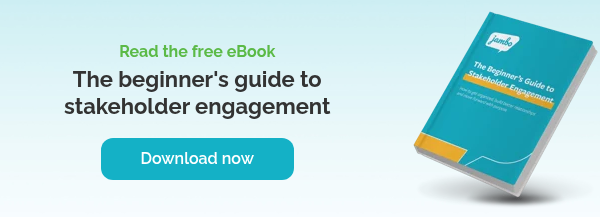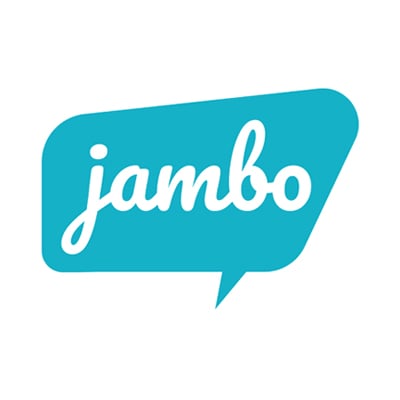
What is a stakeholder engagement plan?
A stakeholder engagement plan is a strategic framework with a detailed step-by-step process that guides meaningful communication with stakeholders throughout a project's lifecycle. Its primary goal is to gain stakeholder support, reduce friction, and align project objectives with stakeholder expectations and interests.
What is the purpose of a stakeholder engagement plan?
A stakeholder engagement plan provides a structured approach to identifying, communicating with, and involving key stakeholders interested in or affected by a project or initiative.
Benefits of a stakeholder engagement plan:
- Reduces project risks
- Helps with the effective management of resources
- Facilitates team collaboration
- Gains buy-in from internal teams
- Helps meet timelines
- Builds trust and better relationships with stakeholders and communities
What are the typical components of a stakeholder engagement plan?
Stakeholder engagement plans include four main elements to help organizations proactively manage relationships, resolve conflicts, and ensure all stakeholders are heard. These include:
- Which stakeholders will be engaged
- Methods and frequency of communication
- The information to be conveyed
- The anticipated level of involvement of the various groups
How to develop a stakeholder engagement plan
To help you as you develop your stakeholder engagement plan, we've outlined five essential steps with several additional tips and resources to help you on your stakeholder engagement plan journey.
5 essential steps to preparing a stakeholder engagement plan
Step 1: Clarify the goal of your plan and any requirements you must meet
To create the best plan for your team and your project, you need to understand your desired outcomes (or goals) for this plan (e.g., build positive stakeholder relationships, meet regulatory requirements, gain approval, etc.).
This is an essential first step because a stakeholder engagement plan created with your goal(s) and requirements will help you and your team make aligned and strategic decisions for more positive project outcomes.
Tip: Reflect on any previous plans and projects
If you've run a project in the past, are there any learnings you can take from your previous plans to help guide this one? What about the members on your team?
- Did anything work particularly well?
- Did you encounter any unexpected obstacles?
- Were specific team members particularly well-suited for certain roles and responsibilities?
Use these learnings as a guide to help strengthen your next plan!
Step 2: Conduct a stakeholder analysis
Once you understand what you're hoping to accomplish with this plan, it's time to focus on the stakeholders and communities you'll engage by conducting a stakeholder analysis.
Want to learn more about stakeholder analysis? Check out our blog! →
While stakeholder analysis can have several parts, three key elements include:
Stakeholder identification
Before engaging, you must determine your stakeholders, and this process must be done thoroughly.
To ensure you identify all necessary stakeholders and community members, we always recommend making this a team exercise and considering every person or group who could be affected or interested in your project, either positively or negatively.
9 questions to help identify your stakeholders! →
Stakeholder mapping
Now that you know your stakeholders, it's time to prioritize them by organizing them into groups.
A popular stakeholder mapping canvas is Mendelow's Power-Interest Matrix, which helps you categorize stakeholders based on their level of interest (high/low) and influence (high/low) on your organization or project.
Explore more details on how to do a stakeholder mapping exercise→
Understanding your stakeholders
After stakeholder identification and mapping, you should take the time to understand your stakeholders more closely. You'll want to learn how they view your organization and project by examining their:
- Perspectives
- Interests
- Concerns and opinions
Once you've understood these, you can assess where stakeholders stand regarding your project (i.e., whether they support, object, are conditional, undecided, or neutral). With this information, you'll better understand the key messages they need to hear and how best to engage them strategically moving forward.
Tip: Use software to understand your stakeholders: Stakeholder Relationship Management (SRM) software is your single source of truth for all stakeholder engagement information. This is beneficial in many situations, such as when you're preparing to engage with a stakeholder with whom you've already communicated on previous projects.
By utilizing an SRM like Jambo to organize and manage your stakeholder information, you'll have access to all the data your team has logged for each project (past and present).
- It allows teams to quickly access previously shared information, including what stakeholders value about a project, their concerns, perspectives, and any issues raised.
- It helps you stay one step ahead at all times through access to a history of engagement and provides teams with a solid understanding of what conversations might be vital for the project at hand.
Step 3: Identify how you will engage with your stakeholders
There are several considerations when planning for stakeholder engagement:
- Engagement tactics: How will you interact with stakeholders? (i.e., through email, brochure, focus group, survey, website, one-on-one meetings, etc.)
- Frequency: How often will you engage with stakeholders?
- Reporting: How will you report updates, changes, and questions to stakeholders?
- Feedback: How will stakeholders be able to reach out to you or your organization?
A helpful way to guide your engagement is to choose engagement levels for your stakeholder categories (i.e., the categories from your stakeholder mapping exercise).
The Spectrum of Public Participation, developed by the International Association for Public Participation (IAP2), is an excellent tool for identifying which level of engagement is best for your stakeholder categories. The IAP2 Spectrum identifies five different levels of participation: inform, consult, involve, collaborate, and empower.
Once you decide on your level of engagement, you're ready to choose your specific engagement tactics (i.e., how you'll engage with stakeholders).
Tip: Don't forget about your key messages! Take some time to consider your stakeholders' engagement category (i.e., their level of interest/influence), their perspectives, and the level of engagement you've chosen for each category to help guide what information each stakeholder will need to hear from your organization.
Key messages should be identified early and be clear and concise so that everyone on your team can understand and use them. Utilizing strategic key messages can help you and your team communicate consistently with stakeholders, which can help build trust in your organization.
Tip: Create a portal for open communication between you and your stakeholders. When we say "two-way communication channels," we mean communication that allows you to reach out to your stakeholders with a channel for them to respond.
Sending out a brochure to stakeholders without information on how to contact you is considered a one-way communication method because, while you can contact them, they cannot contact you. One-way communication methods can certainly be helpful in some situations. Still, it's important to remember that your stakeholders may have valuable information and opinions on your projects, and getting all the stakeholders' feedback is beneficial.
For additional tips on elevating your stakeholder and community engagement, visit our blog! →
Step 4: Create a straightforward, clear step-by-step process
Now that you understand the goal of your project and have a clearer understanding of your stakeholders, their perspectives, and how you'll engage with them, you'll need to develop a step-by-step process using the information you've already identified. This process will be the blueprint for you and your team to implement your plan.
Include elements like:
- Your stakeholder engagement plan goals
- Any regulatory requirements that must be met
- Your stakeholder analysis information
- How you'll be engaging
Don't forget to consider elements like:
- Your budget
- Roles and responsibilities for your team
- Timelines and deadlines
- Key messages
- Potential issues that could arise and how you'll respond if they do
Tip: Monitor and update as necessary. Stakeholder engagement can be complicated, and things can change quickly, so you'll need to adjust and update your plan regularly and ensure you communicate those updates to your team.
Step 5: Choose how you'll record all your stakeholder engagement and plan for reports
You'll collect much information as you engage with your stakeholders and communities. You need to ensure this information is well-organized, accessible, and easy to find for your team, as you'll likely need to share updates on your engagement information and use it to guide your plan.
Check out our blog on how to effectively track stakeholder engagement →
Here are a few situations where you'll benefit from having organized stakeholder information and the ability to run detailed reports:
- Progress updates:
- Sharing progress with your team or other teams in your organization (especially specific to a topic, issue, or commitment.
- Sharing progress updates with management.
- Sharing updates with stakeholders.
- For compliance and regulations: Showing that you're meeting engagement regulatory requirements or other requirements such as Environmental, Social and Governance (ESG) or Corporate Social Responsibility (CSR) requirements.
- For analysis and insights: Gaining valuable insights on your project (e.g., how many people are you engaging?, where are you engaging?, how many issues have been raised?, etc.).
Should I use spreadsheets to record stakeholder engagement?
While many organizations are still trying to use spreadsheets to manage their stakeholder engagement information, this isn't the best method, as spreadsheets leave you, your team, and your project open to unnecessary risks and challenges.
The best way to record stakeholder engagement
Stakeholder relationship management (SRM) software is the best way to log and manage all your stakeholder relationships and communications with stakeholders.
Jambo SRM helps you take your stakeholder management process to the next level by keeping your stakeholder information secure, organized, accessible, searchable, and easy to understand. Jambo can run concise reports in seconds, saving you time and allowing you to stay focused on meeting your project's goals as efficiently as possible.
Explore how stakeholder engagement software can improve your stakeholder relationships→
Free resource to help you build your stakeholder engagement plan
Now that you understand a few of the critical elements of a stakeholder engagement plan, we've developed a free resource to help you get started!
As stakeholder mapping is a critical and valuable step, we've designed this free printable stakeholder mapping template. Click the image below to get your free copy now!












